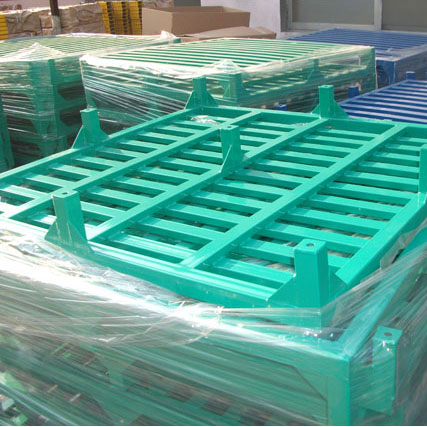
Product Description:
Pallets are platforms used for storage and transportation of goods. Pallets are available in various sizes and materials to serve many applications. Common pallet sizes range anywhere from 20” x 28” up to 48” x 72”. Common metric sizes are 800mm x 1200mm and 1000mm x 1200mm.
Pallets have 2 configurations for jack entry. These are two-way entry and four-way entry. Two-way entry pallets allow the pallet jack to enter from two parallel sides. Four-way entry pallets allow the pallet jack to enter from all four sides. Pallets also have two configurations for fork tines. These are also two-way and four-way entry. Two-way entry allows fork tines to enter from two parallel sides. Four-way entry allows fork tines to enter from all four sides. The top deck of the pallet, the side that faces upward or toward the pallet load is available in an open or closed configuration. A solid top deck has a high percentage of the pallet with a smooth continuous surface. An open top deck is made up of slots, holes, or grid work. The bottom deck of the pallet or the side that faces downwards or toward the floor is available in full, full perimeter, 3-stringer or legs only. A full bottom deck is fully skinned or covered with a grid. A full perimeter bottom deck has a surface that goes around the perimeter. A three-stringer bottom deck has three stringers. They go from front to back in either the length or width direction. Anti-slip surfaces are available on some pallets. It is a secondary component is added to the pallet to increase the coefficient of friction between the pallet and the load and/or the pallet and handling equipment. Anti-slip surfaces are available on the top deck and the fork tine entry or both.
Commonly found features for pallets include rackable, hygienic, nestable, UL fire rated, FDA/USDA compliant, lids and belts, and reinforced. A rackable pallet is capable of being edge supported on either length or width side for long periods of time. A hygienic pallet is designed with cleanliness and ease of cleaning in mind. Collection points for dirt and debris are minimized. A nestable can be stacked to minimize storage room or transportation costs while not carrying a load. UL fire rated pallet has received Underwriters Laboratories (UL) recognition for meeting slow burn requirements. A FDA/USDA compliant pallet meets the Food and Drug Administration and The United States Dairy Associations approval for use. A pallet with lids and belts has the ability to be outfitted with a load covering lid and belts to secure the lid to the assembly. A reinforced pallet has additional components added to increase its racking capacity. Steel tubing and fiberglass pultrusions are typical materials used.
Materials of construction for pallets include aluminum, corrugated cardboard, galvanized steel, stainless steel, structural foam; injection molded plastic and rotationally molded plastic.
Custom applications for pallets include 55-gallon drum, tapered drum, export, display, and dairy.

